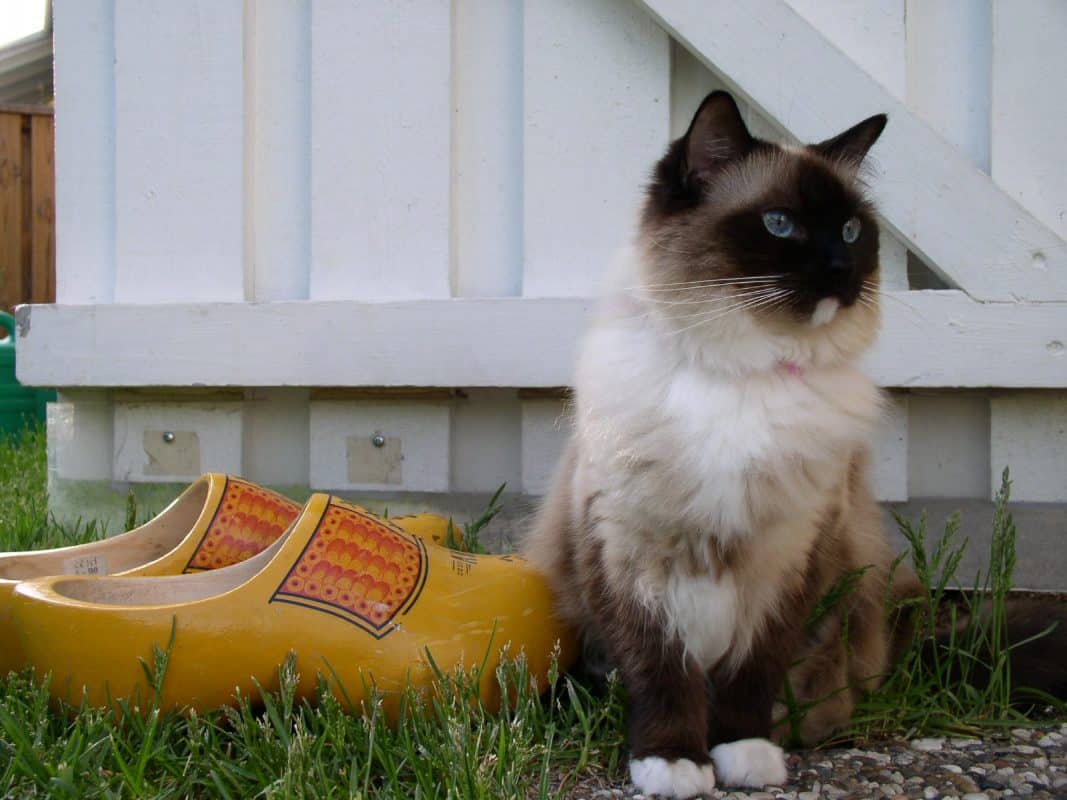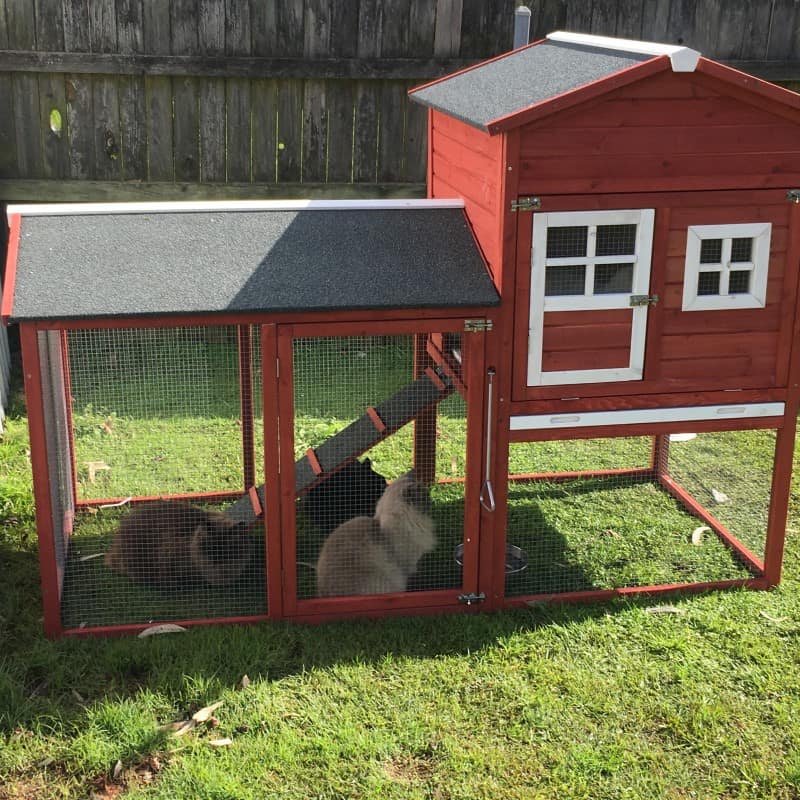Cats
Ragdoll Cat Facts Every Pet Owner Must Know
Do you love big, fluffy cats? If so, the Ragdoll breed is the perfect choice for you.
These wonderful felines are known for their easy-going personalities and stunningly beautiful coats.
In this post, we’ll tell you all about Ragdolls and how to care for them. So if you’re considering adding one of these amazing creatures to your family, keep reading!
History
The first Ragdoll was bred in Riverside, California in the 1960’s by Persian breeder Ann Baker. She bred a white stray female named Josephine with a male Birman. The result were kittens that were very calm and gentle. She continued to breed them with her other cats until the modern Ragdoll was created.
In 1981, Ragdolls were first imported to England. Since then, they have spread worldwide and have continued to grow in popularity as both pets and show cats.
They were named ‘Ragdoll’ because when they are picked up they become so relaxed they go limp and flop their limbs, like a doll.
Appearance
Ragdolls are large, muscular cats with short necks and broad chests.
Females typically weigh between 4-7kg while males weight 7-9kg.
Ragdolls have stunning blue eyes, huge paws, and ears that lean forward with a rounded tip.
They are known for their dense, medium-length coat which is very soft and fluffy. They also have long, bushy tails. Their fur grows longer in winter and shorter in summer.
Their fur has distinctive markings, with a white base and coloured sections. There are many variations of Ragdolls, listed below.
Ragdoll Varieties
Ragdolls come in multiple colours and patterns. All Ragdoll kittens are born white. They start showing colours at around 8-10 weeks, with their full colours reaching maturity at 3-4 years.
Colours options:
- Blue – Bluish-white body with bluish-grey points.
- Chocolate – White body with brown points.
- Cream – White body with cream points.
- Lilac – White body with pinkish grey points.
- Red – White body with bright orange points.
- Seal – Beige body with dark brown points.
Coat pattern options:
- Colourpoint – The mask, ears, tail and paws are well-defined colour points.
- Mitted – Similar to the Colourpoint pattern but with specific white markings. White mittens, socks, chin, chest and stomach.
- Bicolour – Similar to Colourpoint pattern but with additional white areas. Whiteness starts on an upside-down V shape above the nose and goes all the way under the body. One third of the coat is white.
- Lynx – Similar to Colourpoint but with tabby markings.
Personality
Ragdolls are known for their friendly and affectionate nature. They are often said to be “dog-like” in their affection for their owners and love to follow them around the house. They will make sweet noises when they want to be cuddled and roll on their back to get their tummy rubbed.
They make great companions. Ragdolls are lap cats but will also enjoy chasing toys and playing.
Ragdolls are among the most intelligent of cat breeds. They love to learn tricks, and can be taught to walk on a leash. They require mental stimulation so it is recommended you get your Ragdoll a cat scratching post with lots of fun features.
This breed is not aggressive and will get along with other cats and pets. They don’t enjoy hunting so are a minimal threat to native wildlife, compared to other breeds.
Ragdolls as Pets
Ragdolls are an ideal breed for those who are looking for a loving and laid-back companion.
You can purchase a Ragdoll kitten from a specialist breeder. Do your research to find a reputable breeder and ask them lots of questions about the cats and their set up. Ragdolls will develop their personalities by observing personality traits around them in the first 12 weeks. Therefore, finding a nice breeder who loves their cats will result in a good-natured kitten for you.
Responsible breeders will always ask you questions too regarding the home you will provide and if you are prepared to care for a cat.
It is recommended you set up an outdoor enclosure for your Ragdoll. This allows it time outside to play and explore without being able to wander too far or be at risk of getting hit by a car.
You will need to brush your Ragdoll’s coat at least once per week to avoid tangles and remove loose fur. If you start this from an early age, your Ragdoll will enjoy the grooming process and the attention they get from it.
Ragdoll Health
Ragdolls are generally a healthy breed of cat. They will live 10-15 years, although can live longer with good care.
Ragdolls are prone to Feline Hypertrophic Cardiomyopathy (heart disease), Polycystic Kidney Disease (cysts on the kidneys) and bladder stones. There are genetic tests available to help breeders avoid producing cats with these problems.
All cat breeds are prone to Feline Immunodeficiency Virus and Feline Leukemia Virus.
If you suspect your Ragdoll is unwell, book in a visit with your local vet for a check-up.
Ragdoll FAQs
Do Ragdolls feel pain?
There is a myth that Ragdolls can’t feel pain. This is not true! They feel pain the same way any cat does.
Ragdolls are quiet so sometimes hide pain better than other breeds. As an owner, it is your responsibility to be aware of symptoms and take your pet to the vet if you suspect something is wrong.
Are Ragdolls lap cats?
Ragdolls are great lap cats. They love spending time with their human family and are very affectionate.
Their fluffy fur makes them extra cuddly.
Do Ragdolls make good pets?
Ragdolls make wonderful pets. Their gentle, friendly nature means they are suitable for families with children or elderly people.
Can Ragdoll cats be left alone?
Like most cat breeds, Ragdolls will handle being left alone for a few hours. They are more independent than dogs.
However, their affectionate nature means they prefer company. If you are going to be gone for long periods each day, they can get lonely. It may be a good idea to get your Ragdoll another cat as a companion.
Are Ragdolls hypoallergenic?
Ragdolls are not hypoallergenic.
Despite their long, fluffy coat, Ragdolls shed less hair than other breeds. However, they will still shed some hair and are not suitable for allergy sufferers.
Have you owned a Ragdoll cat? What was it like? Tell us in the comments below.





I remember when I was little we got a ragdoll kitten and I loved every second with it! One thing I didn’t realize was that they originated from California. I am going to have to pass this onto my cat loving friends!
Thank you, Jay!
I love ragdoll cats they are adorable in my opinion
I love cats soooooo much! But ragdoll cats are my fav!
All the facts written here are all true, except my male ragdoll cat love to attack and engage in the fight with the other particular female and male cats that he doesn’t like. He like to pee all around the house, even for a few drops, especially at the corner on the wall. He also have one particular American Short Hair junior buddy/protégé. They always groom each others fur. The junior always copy him when it comes to peeing everywhere even though both of them are already neutered. He also copy the ragdoll to attack/engage in the fight with the other same particular cats.